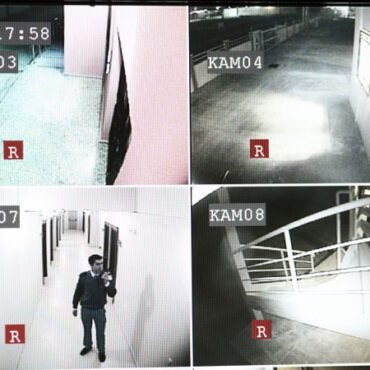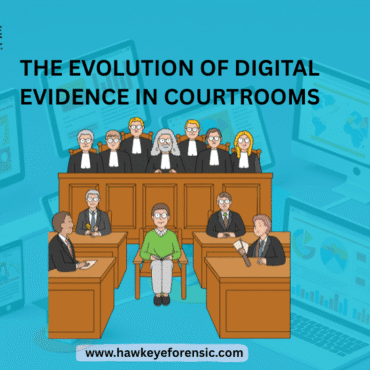Introduction
Insider threats are one of the most dangerous risks to any organisation. Unlike external attackers, insider threats come from people who already have authorised access to systems, networks, and sensitive data. This makes them harder to detect and even more dangerous.
Digital forensics plays a crucial role in identifying suspicious activity, collecting digital evidence, and helping organisations take timely action. In modern enterprises, integrating digital forensics with cybersecurity operations is no longer optional—it’s essential.
What Is an Insider Threat?
An insider threat refers to any risk posed by employees, contractors, partners, or anyone with legitimate access who intentionally or unintentionally harms an organisation. Insider threats fall into three categories:
1. Malicious Insiders
Individuals who intentionally steal data, sabotage systems, leak confidential information, or assist external attackers.
2. Negligent Insiders
Employees who accidentally expose data by misconfigurations, weak passwords, or careless behaviour.
3. Compromised Insiders
Users whose credentials have been stolen through phishing, malware, or social engineering.
Understanding these categories is the first step to applying effective forensic strategies.
Why Digital Forensics Is Essential for Insider Threat Detection
Insider threats rarely leave obvious signs. They often blend in as normal user activity. Digital forensics helps uncover the hidden patterns and evidence behind unusual behaviour.
Key reasons digital forensics is crucial:
-
Reconstructs user activity to identify unauthorised access
-
Preserves evidence for HR, legal, or law enforcement actions
-
Identifies misuse of company assets
-
Supports incident response during live breaches
-
Helps prevent future security gaps
Digital forensics converts raw digital traces into clear insights that help organisations understand what happened, how, who was involved, and what damage was done.
How Digital Forensics Detects Insider Threats
1. Log and Event Analysis
System logs, authentication records, VPN logs, USB activity, and application logs reveal unusual or unauthorised access.
Forensic analysts look for red flags such as:
-
Access outside normal working hours
-
Large file transfers
-
Log in from unusual locations
-
Multiple failed login attempts
2. Endpoint Forensics
Endpoints are a goldmine of evidence when investigating internal misuse.
Analysts examine:
-
Browser history
-
File access timelines
-
Command-line activity
-
Deleted files
-
Registry changes
Tools used: EnCase, FTK, X-Ways, Magnet AXIOM.
3. Network Forensics
Network traffic analysis helps identify:
-
Unauthorised data exfiltration
-
Abnormal internal communication
-
Transfer of sensitive files to external storage
-
Remote access sessions
Packet capture, flow analysis, and intrusion detection systems help correlate insider actions with network-level evidence.
4. Email and Communication Forensics
Insiders often use email to leak or request sensitive information.
Forensic analysis focuses on:
This helps determine intent, timeline, and communication patterns.
5. Cloud and SaaS Forensics
With remote work and cloud migration, insiders increasingly misuse cloud storage such as Google Drive, OneDrive, Dropbox, and corporate SaaS apps.
Forensics can detect:
-
Unauthorised file sharing
-
Access from unknown devices
-
Suspicious download/upload behaviour
-
Credential misuse
Cloud forensics combines platform logs, audit trails, and identity access management data.
6. USB and Removable Media Forensics
One of the most common insider threat vectors is copying data onto external drives.
Digital forensics helps identify:
Real-World Insider Threat Indicators
Digital forensics frequently uncovers these insider threat signals:
-
Employee is downloading large volumes of confidential files before resignation
-
Unauthorised access to restricted folders
-
Unusual use of remote access tools
-
Deleting logs or clearing browser activity
-
Installing unauthorised software
-
Connecting personal storage devices
-
Sending emails to personal accounts with attachments
Role of a Digital Forensics Team in Insider Threat Response
1. Incident Identification
Detect anomalies through monitoring tools and alerts.
2. Evidence Preservation
Use imaging tools and write-blockers to ensure integrity.
3. Timeline Reconstruction
Map actions in precise order to understand how the insider operated.
4. Attribution
Identify the user, device, credentials, and intent.
5. Reporting and Documentation
Provide legally admissible forensic reports for HR, compliance, and law enforcement.
Conclusion
Insider threats continue to rise as organisations handle more sensitive data than ever before. Digital forensics provides the visibility, evidence, and analytical power needed to uncover misuse, detect suspicious actions, and protect critical information assets.
By integrating forensic capabilities with cybersecurity operations, organisations can stay one step ahead—preventing damage before it becomes irreversible.





Post comments (0)